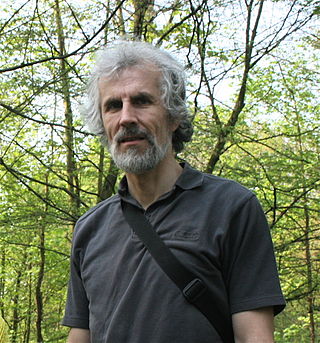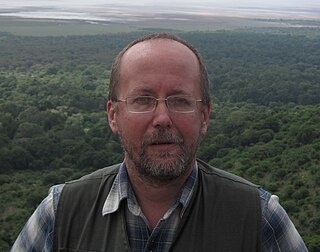
Cliometrics, sometimes called 'new economic history' or 'econometric history', is the systematic application of economic theory, econometric techniques, and other formal or mathematical methods to the study of history. It is a quantitative approach to economic history.
Axial Age is a term coined by the German philosopher Karl Jaspers. It refers to broad changes in religious and philosophical thought that occurred in a variety of locations from about the 8th to the 3rd century BCE.

In sociology, social complexity is a conceptual framework used in the analysis of society. In the sciences, contemporary definitions of complexity are found in systems theory, wherein the phenomenon being studied has many parts and many possible arrangements of the parts; simultaneously, what is complex and what is simple are relative and change in time.

Macrosociology is a large-scale approach to sociology, emphasizing the analysis of social systems and populations at the structural level, often at a necessarily high level of theoretical abstraction. Though macrosociology does concern itself with individuals, families, and other constituent aspects of a society, it does so in relation to larger social system of which such elements are a part. The approach is also able to analyze generalized collectivities.
A complex society is characterized by the following modern features:

Francis Paul Heylighen is a Belgian cyberneticist investigating the emergence and evolution of intelligent organization. He presently works as a research professor at the Vrije Universiteit Brussel, where he directs the transdisciplinary "Center Leo Apostel" and the research group on "Evolution, Complexity and Cognition". He is best known for his work on the Principia Cybernetica Project, his model of the Internet as a global brain, and his contributions to the theories of memetics and self-organization. He is also known, albeit to a lesser extent, for his work on gifted people and their problems.
Quantitative history is a method of historical research that uses quantitative, statistical and computer resources. It is a type of the social science history and has four major journals: Historical Methods, Journal of Interdisciplinary History, the Social Science History, and Cliodynamics: The Journal of Quantitative History and Cultural Evolution.

Societal collapse is the fall of a complex human society characterized by the loss of cultural identity and of social complexity as an adaptive system, the downfall of government, and the rise of violence. Possible causes of a societal collapse include natural catastrophe, war, pestilence, famine, economic collapse, population decline or overshoot, mass migration, incompetent leaders, and sabotage by rival civilizations. A collapsed society may revert to a more primitive state, be absorbed into a stronger society, or completely disappear.

Andrey Vitalievich Korotayev is a Russian anthropologist, economic historian, comparative political scientist, demographer and sociologist, with major contributions to world-systems theory, cross-cultural studies, Near Eastern history, Big History, and mathematical modelling of social and economic macrodynamics.
Jack A. Goldstone is an American sociologist, political scientist, and historian, specializing in studies of social movements, revolutions, political demography, and the 'Rise of the West' in world history. He is an author or editor of 13 books and over 150 research articles. He is recognized as one of the leading authorities on the study of revolutions and long-term social change.

Peter Valentinovich Turchin is a Russian-American complexity scientist, specializing in an area of study he and his colleagues developed called cliodynamics—mathematical modeling and statistical analysis of the dynamics of historical societies.
Harvey Whitehouse is chair of social anthropology and professorial fellow of Magdalen College at the University of Oxford.
Cliodynamics is a transdisciplinary area of research that integrates cultural evolution, economic history/cliometrics, macrosociology, the mathematical modeling of historical processes during the longue durée, and the construction and analysis of historical databases.
Cultural group selection is an explanatory model within cultural evolution of how cultural traits evolve according to the competitive advantage they bestow upon a group. This multidisciplinary approach to the question of human culture engages research from the fields of anthropology, behavioural economics, evolutionary biology, evolutionary game theory, sociology, and psychology.
Computational social science is an interdisciplinary academic sub-field concerned with computational approaches to the social sciences. This means that computers are used to model, simulate, and analyze social phenomena. It has been applied in areas such as computational economics, computational sociology, computational media analysis, cliodynamics, culturomics, nonprofit studies. It focuses on investigating social and behavioral relationships and interactions using data science approaches, network analysis, social simulation and studies using interactive systems.
Historical dynamics broadly includes the scientific modeling of history. This might also be termed computer modeling of history, historical simulation, or simulation of history - allowing for an extensive range of techniques in simulation and estimation. Historical dynamics does not exist as a separate science, but there are individual efforts such as long range planning, population modeling, economic forecasting, demographics, global modeling, country modeling, regional planning, urban planning and many others in the general categories of computer modeling, planning, forecasting, and simulations.
The theory of divergent modes of religiosity (DMR) is intended to explain how religions are created, transmitted, and changed. DMR theory was first developed by anthropologist Harvey Whitehouse following his ethnographic fieldwork in Papua New Guinea. The theory proposes that religions tend to coalesce around two divergent modes, termed imagistic and doctrinal, which are distinguished primarily by their ritual practices. The imagistic mode is characterized by infrequently performed, high arousal rituals (e.g. initiation rites) and is associated with small scale, exclusive religious groups. In contrast the doctrinal mode is characterized by frequently performed, low arousal rituals (e.g. daily recitations of sacred texts) and is associated with larger inclusive communities, as found in the major world religions.
The Evolution Institute (EI) is a non-profit organization whose mission is to apply science-based solutions and use evidence-based best practices to solve today’s most pressing social issues to improve quality of life.
In social science, the structural-demographic theory uses mathematical modeling to explain and predict outbreaks of political instability in complex societies. It originated in the work of sociologist Jack Goldstone and has recently been developed further by the quantitative historians Peter Turchin, Andrey Korotayev, Leonid Grinin and Sergey Nefedov.

Elite overproduction is a concept developed by Peter Turchin that describes the condition of a society that is producing too many potential elite members relative to its ability to absorb them into the power structure. This, he hypothesizes, is a cause for social instability, as those left out of power feel aggrieved by their relatively low socioeconomic status.








